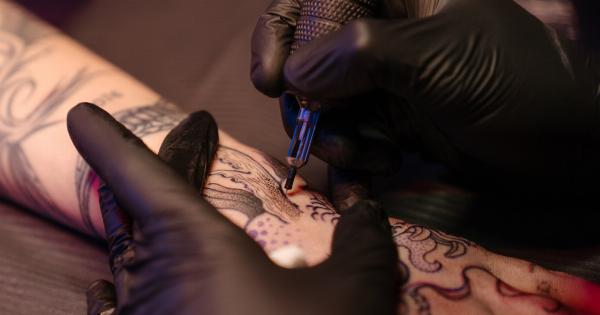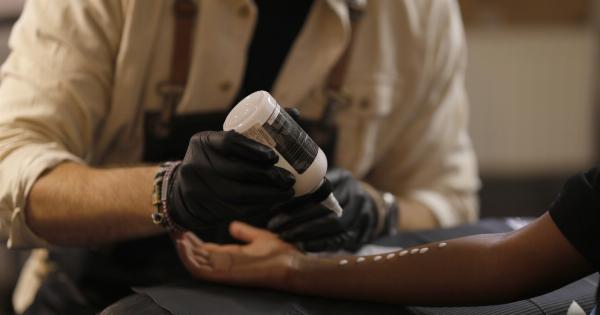Tattooing is an age-old practice that dates back to ancient civilizations, where it was practiced as a rite of passage.
However, tattooing has advanced significantly over the years, and nowadays, tattoos are a form of art, expression, or even a fashion statement. To this end, most tattoo enthusiasts will undergo the tattooing process at least once in their lives. However, despite the growing popularity of tattoos, some individuals are not satisfied with them, and in such cases, they opt for tattoo removal.
Tattoo removal works by breaking down the ink particles in the skin using laser technology. In this article, we shall explore what happens to the skin after tattoo removal.
: Tattoo Removal Process
As mentioned earlier, tattoo removal works by using laser technology. Precisely, the laser generates high-intensity light bursts that pass through the skin and target the ink particles.
The heat energy created by the laser beam breaks down the ink particles into smaller fragments. White blood cells in the body then engulf/remove these fragments because they are regarded as foreign objects. The process is typically fast and takes a few minutes, depending on the size of the tattoo.
What Happens to Your Skin after Tattoo Removal?
After the tattoo removal procedure, the skin undergoes a series of transformations before healing. The following are some of the changes that happen:.
: Hypopigmentation
Following the removal of a tattoo, the skin is likely to exhibit hypopigmentation. Hypopigmentation is a condition characterized by a loss of skin color. In this case, the skin in the treated area may appear lighter than the surrounding skin.
This is because the laser that was used in the procedure has not only broken down the ink particles but may also have destroyed the pigment-producing cells in the skin. In most cases, this is a temporary condition that resolves itself after some time, but in some instances, it may last for years or even be permanent.
: Hyperpigmentation
On the other hand, some individuals may experience hyperpigmentation after tattoo removal. Hyperpigmentation is a condition in which the skin appears darker than the surrounding skin.
It occurs when the pigment-producing cells in the skin are stimulated to produce more melanin following the tattoo removal procedure. This condition may also be temporary, but it may take longer to resolve. In most cases, the skin color eventually returns to normal, but in some instances, hyperpigmentation may be permanent.
: Scarring
In some cases, tattoo removal may cause scarring. Scarring occurs as a result of the laser beam used during the procedure; it may cause damage to the skin tissues resulting in the formation of scar tissue.
The extent of scarring depends on several factors, including the depth of the tattoo, the sensitivity of the skin, and the type of laser used. Scarring may manifest as raised or depressed areas on the surface of the skin, and it may be temporary or permanent.
: Redness and Swelling
After the tattoo removal procedure, it’s normal for the skin to exhibit redness and swelling. Redness occurs because the laser beam used in the procedure may irritate the skin.
Swelling occurs because the body responds to the irritation by increasing blood flow to the area to accelerate the healing process. These symptoms typically resolve themselves after a few days, but in some cases, they may persist for longer.
: Itching
After a week or two following the tattoo removal procedure, your skin may start to itch. This is because the body is eliminating the destroyed ink particles from the body, and the natural immune response to the ink particles may cause itching.
It’s important to avoid scratching the itchy skin to avoid bacterial infection, which may further complicate the healing process.
: Pain
Pain is a normal occurrence after undergoing tattoo removal.
The level of pain experienced after the procedure varies from individual to individual depending on several factors, including the size and location of the tattoo, the skin’s sensitivity, and the type of laser used. In most cases, the pain experienced after tattoo removal is manageable using painkillers. However, if the pain persists or worsens, it’s essential to seek medical attention as soon as possible.
: Conclusion
Tattoo removal is gaining popularity as more individuals opt to remove tattoos, for one reason or another. The procedure works by using laser technology that breaks down the ink particles in the skin.
However, the process comes with some side effects that include hypopigmentation, hyperpigmentation, scarring, redness and swelling, itching, and pain. It’s essential to understand these side effects to know what to expect from the procedure and to take proper care of the affected area until it heals.



























